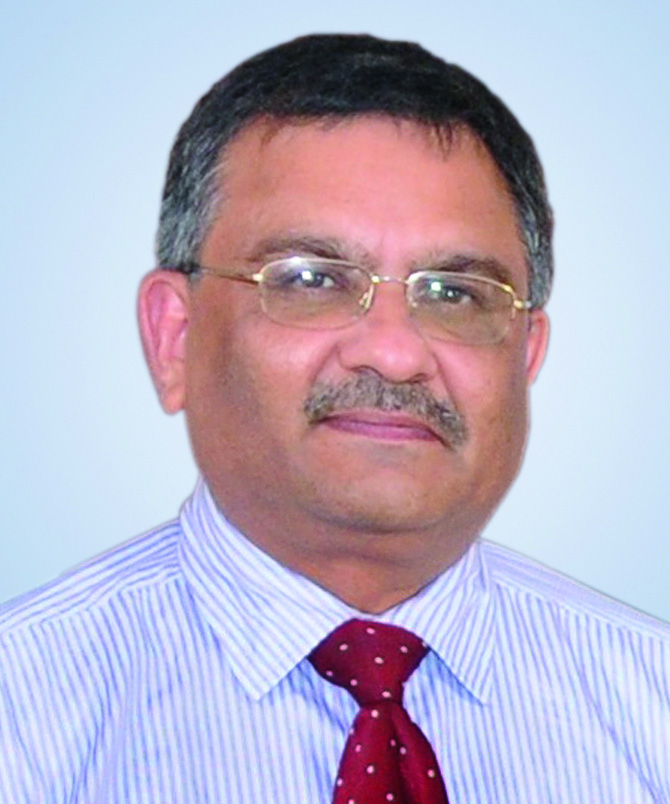 Innovation and local R&D have the potential to make domestically manufactured electrical equipment globally acceptable and competitive. This is also being promoted under the government’s Make in India initiative. Besides, UDAY 2.0 and the new tariff structure, expected to be introduced soon, are likely to augment the demand for electrical equipment in the domestic market. In an interview with Power Line, R.K. Chugh, president, Indian Electrical and Electronics Manufacturers Association (IEEMA), shares his views on the state of the transmission and distribution (T&D) segments, the outlook for the power equipment industry, and the IEEMA’s key focus areas. Excerpts…
Innovation and local R&D have the potential to make domestically manufactured electrical equipment globally acceptable and competitive. This is also being promoted under the government’s Make in India initiative. Besides, UDAY 2.0 and the new tariff structure, expected to be introduced soon, are likely to augment the demand for electrical equipment in the domestic market. In an interview with Power Line, R.K. Chugh, president, Indian Electrical and Electronics Manufacturers Association (IEEMA), shares his views on the state of the transmission and distribution (T&D) segments, the outlook for the power equipment industry, and the IEEMA’s key focus areas. Excerpts…
What is your view on the current state of the power sector, especially the T&D segment?
In fiscal 2019, India achieved an installed generation capacity of 356 GW, a year-on-year increase of 13 GW. However, we fell short of the targeted addition for the year, meeting only 73 per cent in thermal and 53 per cent in renewables. We did well in transmission by adding 22 ckt. km of lines, achieving 99 per cent of the target, and also in transformation capacity, under which we added 72 GVA (including HVDC), thereby over-achieving the target by 16 per cent. We have already achieved 40-50 per cent of the targeted transmission capacity of the Thirteenth Plan, which is key for interregional power transfer and for strengthening power markets. Sadly, our per capita electricity consumption is still low at 1,200 kWh. We have witnessed weak growth in renewable energy capacity addition and generation in the first half of 2020 on account of policy bottlenecks in anti-dumping duty, and GST in the solar space.
What are the key issues and challenges facing the equipment industry in the country?
All of us are aware of the current economic slowdown, both cyclical and structural, as well as that which is externally induced. There are slowdown indicators in the T&D space. We need to be cognisant of the same and take efficiency measures to stay afloat. In the first quarter of fiscal 2020, on a year-on-year basis, transmission lines and transformers registered a negative growth of -7 to -8 per cent, while cables and switchgear, which witnessed a double-digit growth a year ago, slowed to 1-6 per cent. With the end of UDAY 1.0 and Saubhagya, the industry is looking forward to new reforms to spur growth. Distribution continues to be the Achilles heel of the sector, despite the intervention by UDAY 1.0. Power distributors’ cumulative losses in 2019 stood at Rs 280 billion, an 80 per cent year-on-year increase. Many distribution system operators (DSOs) in the northern and eastern regions and in Tamil Nadu are in the red again. The DSOs’ financial stress reflected on gencos with low PLFs of around 60 per cent. Manufacturing companies have dues of over Rs 80 billion with utilities. Of this, a good chunk is on account of DSOs.
What is your outlook for the power equipment industry for the coming years?
The policy framework to be rolled out under UDAY 2.0 and the new tariff structure will make DSOs responsive, accountable and cost efficient. DSOs will be able to buy more power from the trading platform, at a lower cost. This will also put pressure on DSOs to license and franchise their circles even more. After a likely subdued 2020, post the introduction of these measures, electrical equipment manufacturers will see a resurgent market for electrical components as well as digital solutions over a five-year horizon. Metering will remain buoyant. Our decarbonisation mission, through higher renewable energy penetration and electric mobility by 2030, will open up huge markets for new products. Grid-scale storage will become a necessity as renewables begin to penetrate to levels beyond 25-30 per cent. There are some aspects that are impacting the security of the sector. Our sub-transmission system below 132 kV is vulnerable to malware/ransomware cyberattacks. DSOs in West Bengal and Rajasthan have witnessed some incidences in the past 18 months. The threats present opportunities for specialists in the space to create a security shield.
What are IEEMA’s priorities over the next few years? What will be its major focus areas?
IEEMA is a micro, small and medium enterprise-based association. Our priority is to inculcate a culture of innovation and local R&D to make our products globally acceptable and competitive. This calls for a large effort to upscale our member community, which is being done through various measures such as giving members exposure to global technologies and practices through events such as ELECRAMA and other avenues. We are focusing on the Make in India initiative for products that are currently being imported. We are also looking for opportunities to export these made in India, locally innovative products. This will increase our share in the global market.
